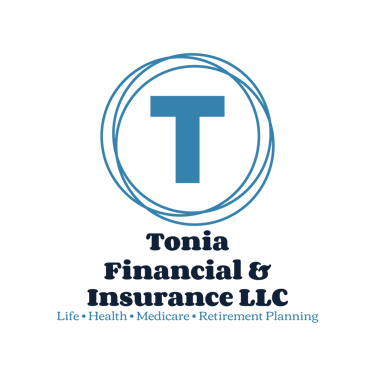Pay Off Debt & Boost Retirement Savings Today
Struggling to pay off high-interest debt while saving for retirement? Discover practical tips to tackle debt and maximize your savings effectively. Start your journey to financial freedom without feeling overwhelmed!
FINANCIAL FREEDOM/ RETIREMENT PLANNING
Tonia Perry
1/26/20252 min read


Balancing saving for retirement with paying off debt can feel like a tightrope walk. On one hand, retirement savings ensure your financial future; on the other, debt can feel like a weight keeping you from getting ahead. Striking the right balance doesn’t have to be overwhelming. Here’s how to navigate this tricky financial situation with confidence and clarity.
1. Assess Your Financial Landscape
Before making decisions, get clear on where you stand financially. Write down all your debts, including their balances, interest rates, and minimum payments. Then, calculate your monthly expenses and income. This will help you determine how much flexibility you have for saving and debt repayment.
2. Prioritize High-Interest Debt
High-interest debt, such as credit card balances, can derail your financial goals if left unchecked. Paying off this type of debt should often take priority because the interest costs grow faster than many investments. Focus on reducing high-interest debt while still contributing something to your retirement savings.
3. Don’t Miss Out on Employer Retirement Matches
If your employer offers a 401(k) match, contribute enough to take full advantage of it. This is essentially free money and provides an immediate return on your investment—something no debt repayment can match.
4. Build a Starter Emergency Fund
It’s hard to stay on track if unexpected expenses pop up. Aim to set aside $500–$1,000 as a starter emergency fund to avoid relying on credit cards when emergencies arise. Having even a small cushion can keep you from backsliding into more debt.
5. Use the 50/30/20 Rule as a Guideline
A helpful framework for balancing financial priorities is the 50/30/20 rule:
50% of your income goes toward necessities (housing, utilities, minimum debt payments).
30% goes toward wants (entertainment, dining out).
20% goes toward savings and extra debt payments.
If you’re in a tight spot, you might adjust this temporarily to direct more to debt or savings.
6. Contribute to an IRA or Roth IRA
If you don’t have access to an employer-sponsored retirement plan, consider opening an Individual Retirement Account (IRA) or a Roth IRA. These accounts allow you to save for retirement with tax advantages, even if you’re managing debt.
7. Consider the Debt-to-Investment Ratio
If the interest rate on your debt is higher than the average return on retirement investments (often around 7% historically for stocks), prioritize paying off that debt. For example:
Pay off credit card debt with 20% interest before saving aggressively.
Keep paying student loans with a 4% interest rate while contributing more to retirement savings.
8. Automate and Stay Consistent
Automating your finances can take the stress out of decision-making. Set up automatic transfers for both retirement savings and debt payments. Even small, consistent contributions add up over time.
9. Celebrate Small Wins
Progress can feel slow when you’re managing both debt and savings goals. Celebrate small milestones, like paying off a credit card or reaching your first $1,000 in retirement savings. This positive reinforcement can keep you motivated.
10. Seek Professional Guidance
Sometimes, balancing these priorities is too complex to handle alone. A financial coach or advisor can help you create a personalized plan that considers your unique situation. They can provide clarity and help you avoid common pitfalls.
The Bottom Line
Saving for retirement while managing debt is about balance, not perfection. The key is to stay intentional, adjust as your circumstances change, and remember that small steps today lead to big rewards down the road.
You don’t have to choose between financial security now and later—you can build both with a smart, consistent plan.
Would you like help creating a plan to prioritize your debt and savings goals? Reach out for a consultation today—I’d love to help you take the next step!

EMAIL: Strive.tonia@gmail.com
PHONE:(216)800-7303
© 2025. All rights reserved.
We do not offer every plan available in your area. Currently, we represent 9 organizations which offer 80 products in your area. Please contact Medicare.gov, 1-800-MEDICARE, or your local State Health Insurance Assistance Program (SHIP) to get information on all of your options. This is a proprietary website and is not associated, endorsed or authorized by the Social Security Administration, the Department of Health and Human Services or the Center for Medicare and Medicaid Services. This site contains decision-support content and information about Medicare, services related to Medicare and services for people with Medicare. If you would like to find more information about the Medicare program please visit the Official U.S. Government Site for People with Medicare located at http://www.medicare.gov
Independent Insurance Agent | Final Expense Insurance Ohio | Medicare Advantage Plans Cleveland | Life Insurance for Children | Medigap Plans PA | Insurance Advisor for Seniors | Community Insurance Help
